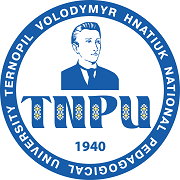THE APPLICATION OF FILM FRAGMENTS TO ENHANCE INTERCULTURAL COMMUNICATION LEARNING
DOI:
https://doi.org/10.32782/2307-1222.2025-59-24Keywords:
cultural competence, education, film, intercultural communicationAbstract
In today’s interconnected world, intercultural competence is increasingly essential for effective communication across diverse cultural contexts. For students, learning to understand and appreciate cultural differences fosters empathy, enhances communication skills, and prepares them for global careers. One innovative approach to developing intercultural competence in educational settings is through the use of film fragments. Films provide rich, realistic portrayals of cultural interactions, values, and conflicts that enable students to observe and analyze cultural dynamics in action.This paper explores the application of film fragments in intercultural communication learning, emphasizing their potential to make cultural education both engaging and impactful. Educators can expose students to various cultural perspectives by focusing on carefully selected film scenes, stimulating critical thinking, and encouraging discussions about cultural norms and values. Key strategies include pre-watching contextualization, guided discussions, role-playing, and reflective writing exercises. Additionally, the paper provides practical examples of films that illustrate specific intercultural themes, such as Lost in Translation for culture shock, My Big Fat Greek Wedding for familial cultural expectations, The Farewell for differences in emotional expression across Eastern and Western cultures, The Pursuit of Happyness for the intersection of race, class, and culture, The Last Samurai for historical cultural conflict, and East is East for generational and cultural clashes in immigrant families, etc. By incorporating such films into the curriculum, educators can foster critical thinking, empathy, and a deeper understanding of intercultural dynamics.Film fragments become a valuable pedagogical tool through these methods, enabling students to experience the nuances of intercultural communication firsthand. This approach not only enriches language learning but also broadens students’ worldviews, preparing them for diverse social and professional environments. The paper concludes with recommendations for integrating film fragments into curriculum design and directions for future research on multimedia’s role in intercultural education.
References
Brown C.W. Critical visual literacy and intercultural learning in English foreign language education. University of Stavanger, 2021. P. 112–130.
Hall E.T. Beyond culture. Garden City, New York : Doubleday, 1976. 320 p.
Gudykunst W.B., Kim Y.Y. Communicating with strangers: An approach to intercultural communication. 7th ed. New York : McGraw-Hill Education, 2017. 400 p.
Rao Q., Chen R. Intergenerational ambivalence and negotiations: Malaysian Chinese family dynamics in the film The Journey. Mandarinable : Journal of Chinese Studies. 2022. № 5 (1). P. 50–65. URL: https://www.researchgate.net/publication/375216965_Intergenerational_Ambivalence_and_Negotiations_Malaysian_Chinese_Family_Dynamics_in_the_Film_The_Journey.
Fleming M. Arts, language and intercultural education. Language Teaching Research. 2021. № 25 (6). P. 821–835. URL: https://journals.sagepub.com/doi/10.1177/13621688211044244.
Pekrun R., Linnenbrink-Garcia L. International handbook of emotions in education. New York : Routledge, 2014.
Kauppinen H., Dervin F. Intercultural film literacy education against cultural mis-representation. International Journal of Education & the Arts. 2022. № 23 (1). P. 15–30. URL: https://files.eric.ed.gov/fulltext/EJ1391052.pdf.
Leal D. Cinema as intercultural communication. The Cambridge Handbook of Intercultural Communication / K. Nakayama, J. Martin (Eds.). Cambridge : Cambridge University Press, 2022. P. 98–115.
Mayer R.E. Multimedia learning. Cambridge : Cambridge University Press, 2009. 380 p.










